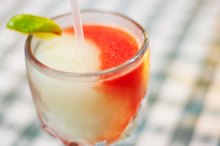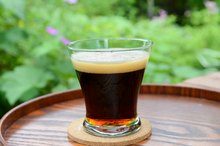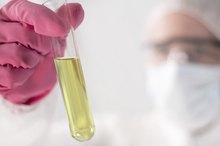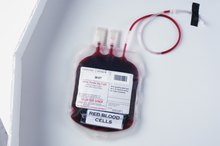How to Convert Serum Alcohol to Blood Alcohol
When someone drinks alcohol, it is absorbed through the stomach and transfers to the blood. As a result, blood samples taken for testing determine how much alcohol someone has ingested. Many blood samples are rendered into serum, removing the red blood cells in the process. This increases the water content in the sample and changes the ratio of alcohol to blood. Based on statistical studies, forensics experts have developed conversion factors for comparing serum alcohol concentration to blood alcohol concentration.
Verify the blood test result was conducted on serum and not whole blood. Serum has higher water content than whole blood and yields a different result.
The Effects of Alcohol on Oxygen Absorption
Learn More
Divide the Serum Alcohol Concentration or SAC by 1.14 to convert to Blood Alcohol Concentration or BAC, such as BAC = (SAC/1.14). This conversion factor, based on statistical analysis of water concentration in serum, is widely used in forensics and law enforcement in the United States.
Develop a range of BAC values for greater accuracy. According to forensics toxicologist Dr. Nachman Brautbar, "From experimental studies a plasma-blood ratio of 1.22-to-1 corresponds to the mean plus 2 standard deviation and this higher conversion factor should be used in forensic work." Under Dr. Brautbar's analysis, BAC = (SAC/1.22) and gives a more conservative estimate. In Canada, The Centre of Forensic Sciences uses BAC = (SAC/1.16). Calculating all three conversions gives an accurate range of blood alcohol concentration based on serum testing.
Warnings
All experts agree that the conversion of SAC to BAC is approximate and subject to interpretation.
Related Articles
References
Writer Bio
Terri Lynn Coop is an attorney by day and a writer by night. She began writing professionally in 2006 and her work has appeared in Dream People, Whispers of Wickedness, Flashshots and "The Flash 40 Anthology." She has a Bachelor of Science in civil engineering from University of the Pacific and a Juris Doctor from the University of Tulsa.









